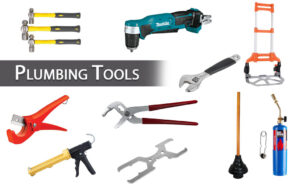Plumbing Springdale AR is the work of connecting and repairing things such as water and drainage pipes, baths, and toilets. Whether you’re a DIYer or you want to hire a professional, learning basic plumbing can save you money and time in the long run.

Plumbers use a variety of tools and materials to repair and install plumbing systems. They also make sure that their work meets regulatory standards.
The water heater, often called a tank heater or storage tank, is the main component of your plumbing system that keeps you supplied with hot water. It’s also an important part of your home’s energy efficiency and can help you save money on your utility bills by keeping your water at a constant temperature.
A water heater consists of two main parts: the tank and the heating elements. These are connected via a series of pipes, including one that brings cold water into the base of the tank and another that transfers heated water to your home’s fixtures.
When your sink or shower faucet is turned on, incoming cold water travels through the pipe to the bottom of the tank and heats up to the temperature set by the thermostat. This water is then drawn off from the top of the tank through a dip tube, which funnels it wherever you want to use it.
If your hot water isn’t getting to where it needs to be, it might be because of a problem with your thermostat or another element in the unit. If you’re not sure, call a professional to check it out.
It’s also a good idea to drain the water from your tank every once in a while and flush it out using the spigot that is attached to the base of the tank. This is especially helpful to remove sediment buildup, such as scale and rust, that can cause problems in the heating elements.
Then, make sure the thermostat is set to the desired temperature and that there’s a pressure relief valve in place. This will release water from the tank if it starts to exceed the safety limits of pressure or temperature.
This is a great way to ensure that your hot water is always safe to use and won’t lead to scalding. If you’re using a gas water heater, make sure to use a shut-off valve that will stop the burner from running when you turn off the power supply at your main electrical panel.
Whenever you work on a water heater, be sure to read the manual and follow the installation instructions carefully. New water heaters come with a wealth of instructions and warnings about the gas, electrical, and other connections you’ll need to handle safely, so take them seriously and be prepared to have your work inspected once it’s complete.
Drain cleaning is a process that professional plumbers use to remove debris from your pipes. It’s often the best way to resolve clogged drains and keep your plumbing running smoothly.
Over time, hair, soap scum, grease, and other items accumulate in your sink and shower drains, and these build-ups can make the opening in your pipes smaller and smaller. This makes it harder for waste water to flow through and causes your sinks or tubs to drain slowly.
If you notice gurgling sounds, air bubbles rising in the toilet, or bad odors emanating from your sink, it’s time to call in a plumber to perform drain cleaning. This will clear clogs, eliminate rotting debris, and get your drains working properly again.
Unlike many at-home drain clearing methods, which can only reach surface-level clogs and debris, professional plumbers use tools like pipe cameras to pinpoint the exact cause of your clogged pipes. Once they’ve found the issue, they use specialized equipment to mechanically remove obstructions and dislodge deposits of oil or minerals caked on the side of your pipes.
This approach is safer than chemical drain cleaners, which can damage your home’s plumbing system and your health. And if your plumbing system includes a septic tank, harsh chemicals can kill the bacteria that helps break down organic materials and clear clogs.
